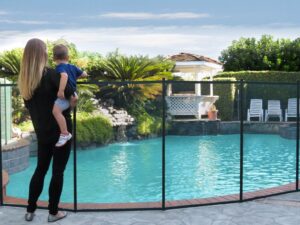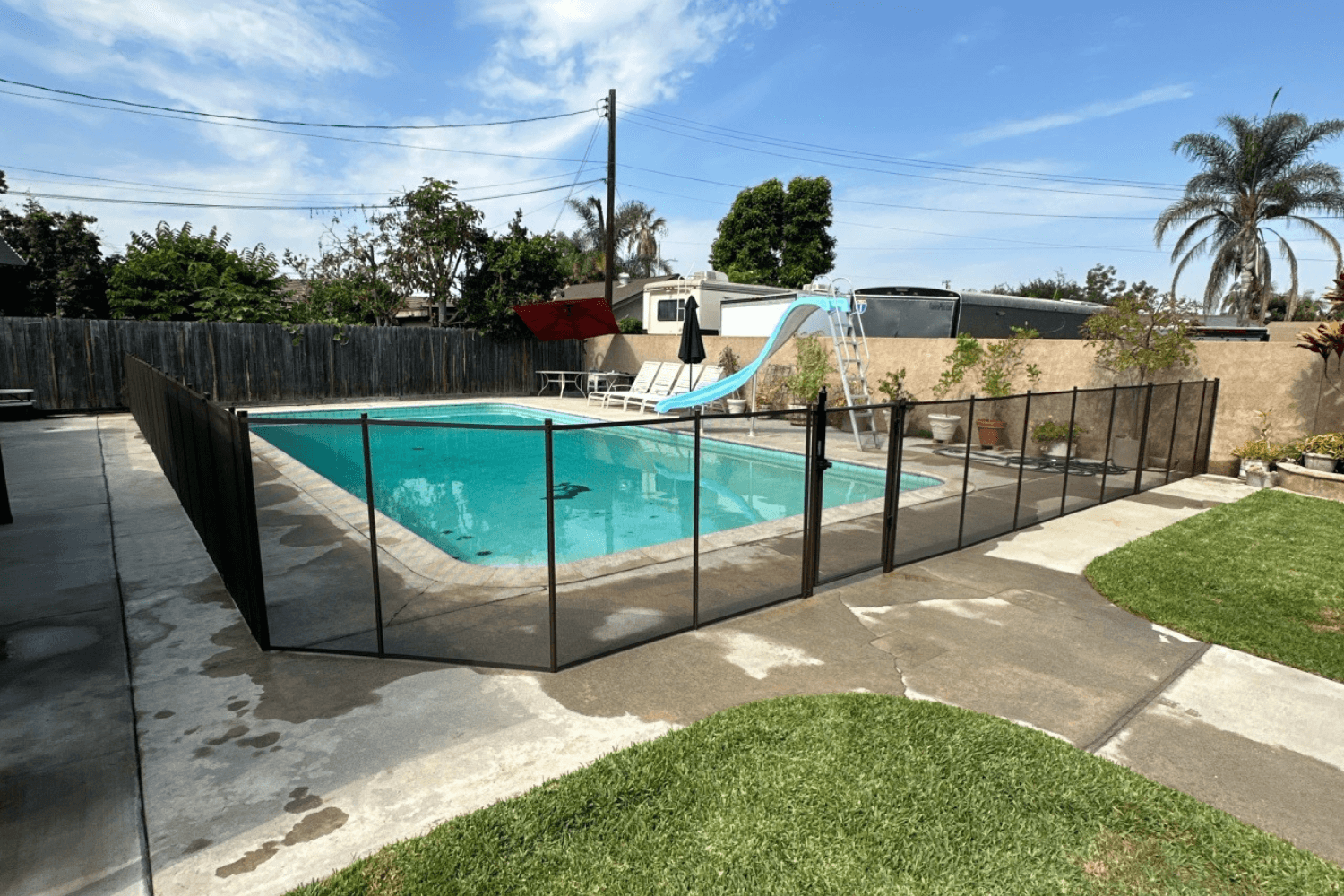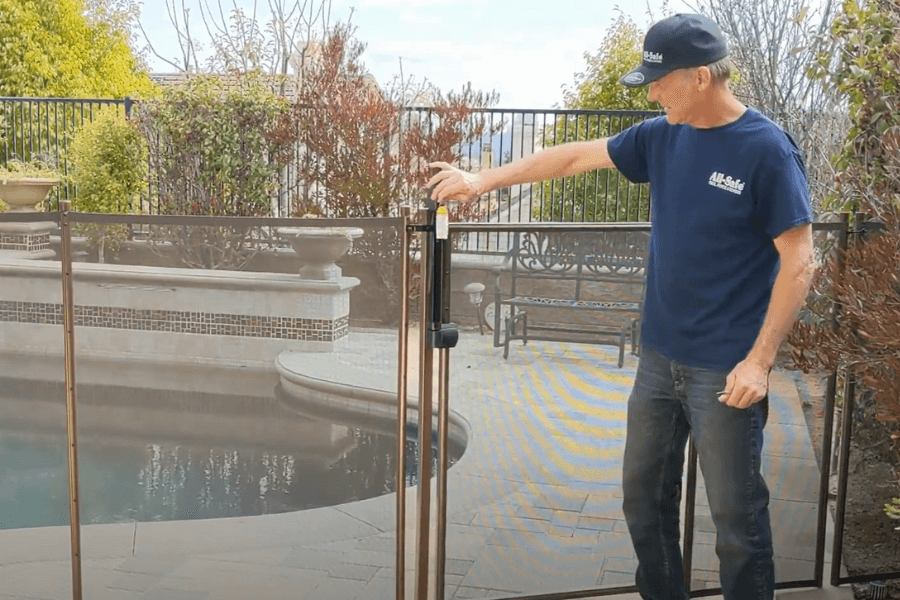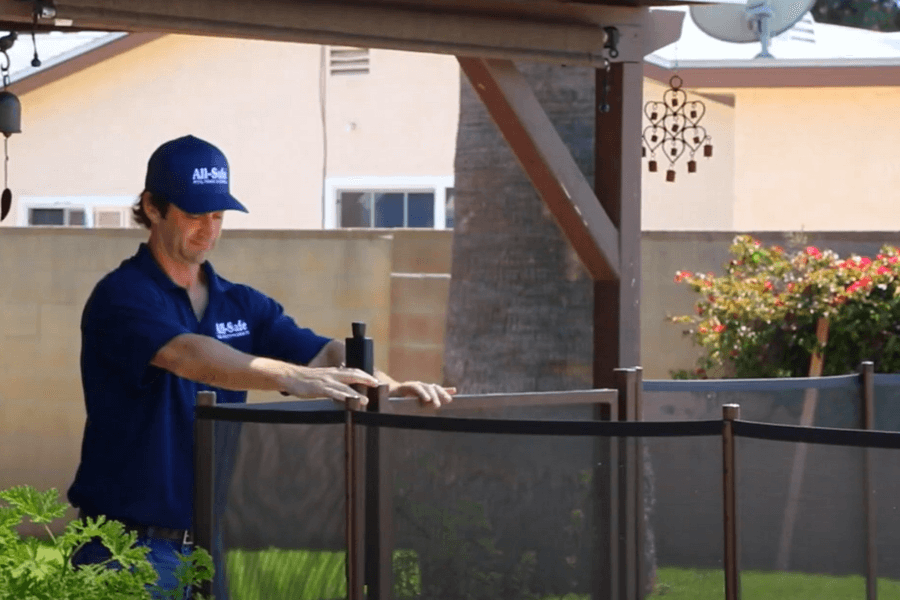
What Makes a Pool Fence Truly “Child-Safe”?
A truly child-safe pool fence does more than meet code. Discover the features parents should prioritize, and how All‑Safe builds fences that families trust.

Before the pool parties, cannonballs, and long summer evenings begin, there’s one essential task every pool owner should check off: the pool fence inspection.
It’s more than just a quick once-over; it’s your chance to make sure your barrier is doing its job to protect kids, pets, and guests. According to the U.S. Consumer Product Safety Commission, a significant number of home pool-related child drownings occur due to inadequate or faulty fencing. Most of these tragedies are preventable with a barrier that meets code and is regularly maintained.
Over time, even high-quality fences can suffer from wear and tear. Harsh sunlight can fade and weaken mesh, moisture can corrode metal parts, and ground movement or frequent gate use can loosen critical components. That’s why setting aside time each spring for a detailed inspection is one of the smartest things a pool owner can do.
Before you begin, gather a few basic tools that will help you assess and address any minor issues right away:
Having these items on hand means you won’t have to stop halfway through to run back to the garage or hardware store. It also ensures you can make small fixes immediately, before they become big problems.
Use the following pool fence compliance checklist to guide your inspection. These checks are based on ASTM and local safety standards:

Some problems, like a small tear or a loose screw, are easy to fix on the spot. Others, such as multiple leaning poles, widespread rust, or a gate that won’t latch properly, could indicate deeper issues with your installation or the materials themselves.
If you’re unsure about the severity of what you’ve found, don’t guess. Reach out to the team at All-Safe for a professional evaluation. We offer DIY solutions and work with a network of local resellers who have the tools and training to restore your pool barrier to full compliance.
While your annual pool fence inspection is a major step in ensuring safety, small routines throughout the season can go a long way:
These small efforts help extend the life of your fence and maintain its effectiveness between major inspections.

Even if you’re a handy homeowner, there are times when a trained eye makes all the difference. If your gate drags, poles lean noticeably, or sections feel unstable, a professional inspection may be necessary. All-Safe’s technicians come equipped with tools that allow us to fix issues quickly and ensure full compliance with ASTM safety standards.
Whether you’re concerned about a particular part of your fence or simply want peace of mind before summer, we’re here to help.
A safer pool season starts with a fence that’s code-compliant and well-maintained. Use this pool fence compliance checklist to guide your inspection, fix what you can, and call in the experts if you need backup.Still have questions? Reach out to the All-Safe team anytime. We’re here to support you and your family every step of the way.

A truly child-safe pool fence does more than meet code. Discover the features parents should prioritize, and how All‑Safe builds fences that families trust.

Thinking of installing your own pool fence? Discover the benefits of DIY kits, from cost savings and flexibility to safety compliance, and how All‑Safe makes it possible.

Just got a pool? Learn what every new owner should know, from safety codes and barrier options to basic upkeep and seasonal preparation.
Enter your zip code to locate an independent installer in your area
Enter your zip code to locate an independent installer in your area
Their contact info will be shown on the next screen.
Due to the many variations in monitors, phones, and browsers, color samples and product examples may appear different on different screens. Computers and mobile devices are not all calibrated equally and color reproduction on the Internet is not precise. The same is true for printed items such as brochures and other sales literature.
In addition, the colors of our products photograph differently under different lighting conditions. For example, photos taken in full sunlight will vary from photos taken on a cloudy or overcast day. Similarly, shadows from nearby objects can affect the color and transparency of our products. If a precise color or specific shade is important, please inspect the actual color of your product prior to installation.
Many of our products’ materials are not available through typical stores and vendors and therefore must be custom manufactured specifically for our use. In order to control costs and provide you with the best value possible, our raw materials are produced in large batches and can often take several months to receive. The colors of our materials can, and often do, vary slightly from batch to batch. Although we make every effort to minimize color variations, we cannot be responsible for these differences when they occur. If a precise color or specific shade is important, please inspect the actual color of your product prior to installation.
For example, we use the name “putty” to describe some of our products. Your idea of the color “putty” may be different than someone else’s idea of “putty”. In addition, products may have the same color name but may not be the exact same color. For example, we have different shades of “black”. Please do not order using color names as your only guide. If a precise color or specific shade is important, please inspect the actual color of your product prior to installation.
If it is important that your product be an exact color or shade, it is highly recommended that you inspect the actual product prior to its installation and address any concerns with your local independent installer. Most independent installers do not offer refunds or accept returns due to color variations.